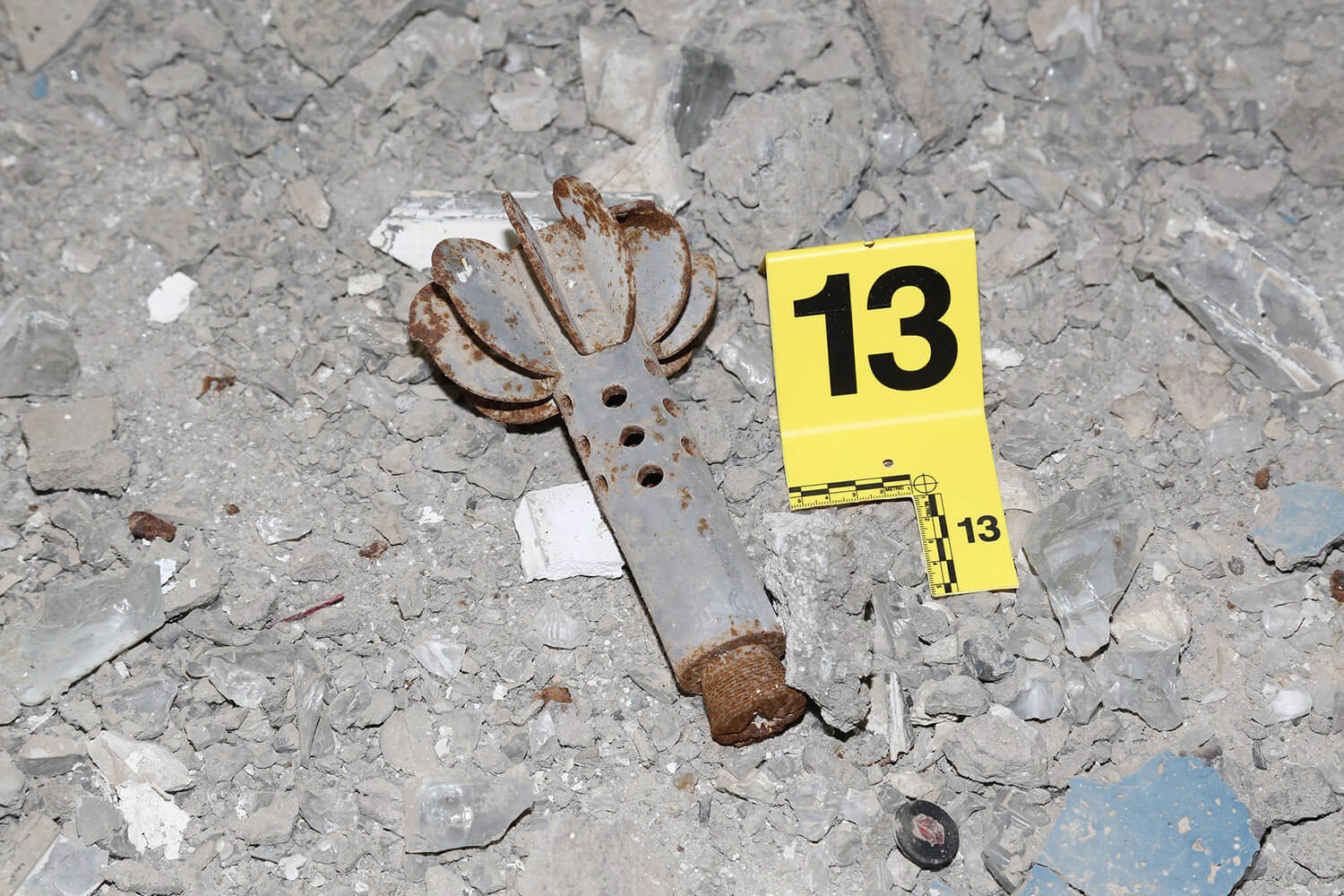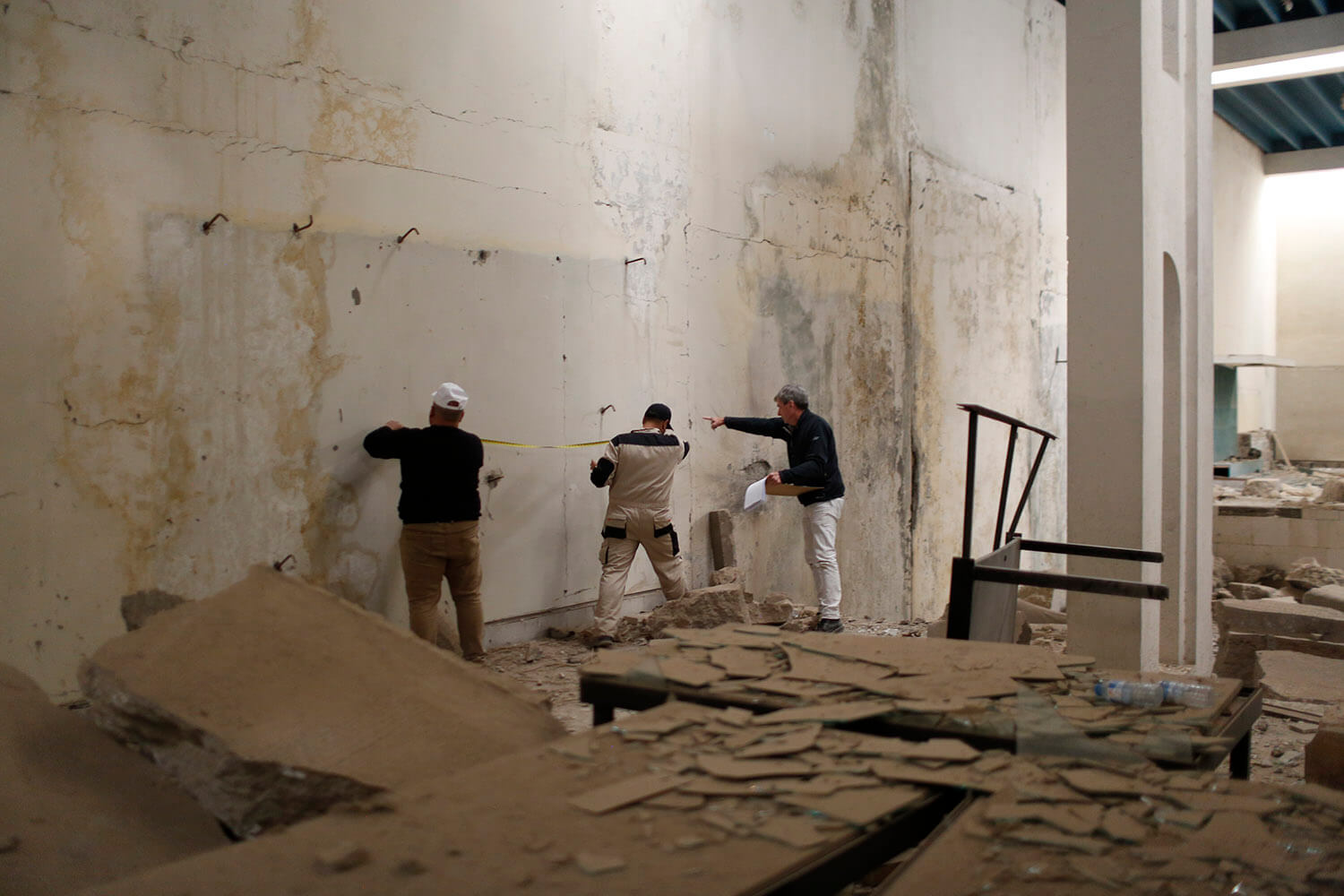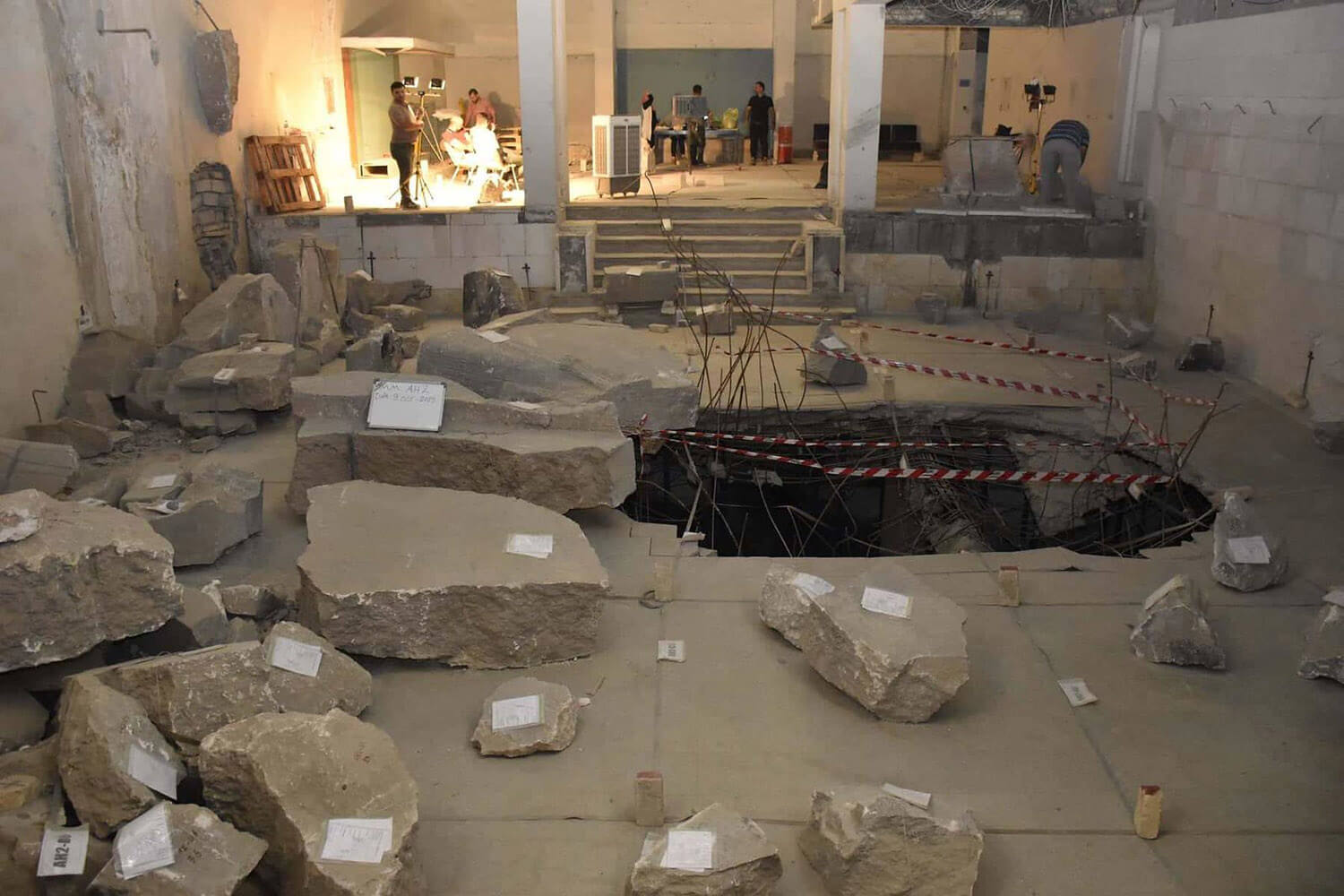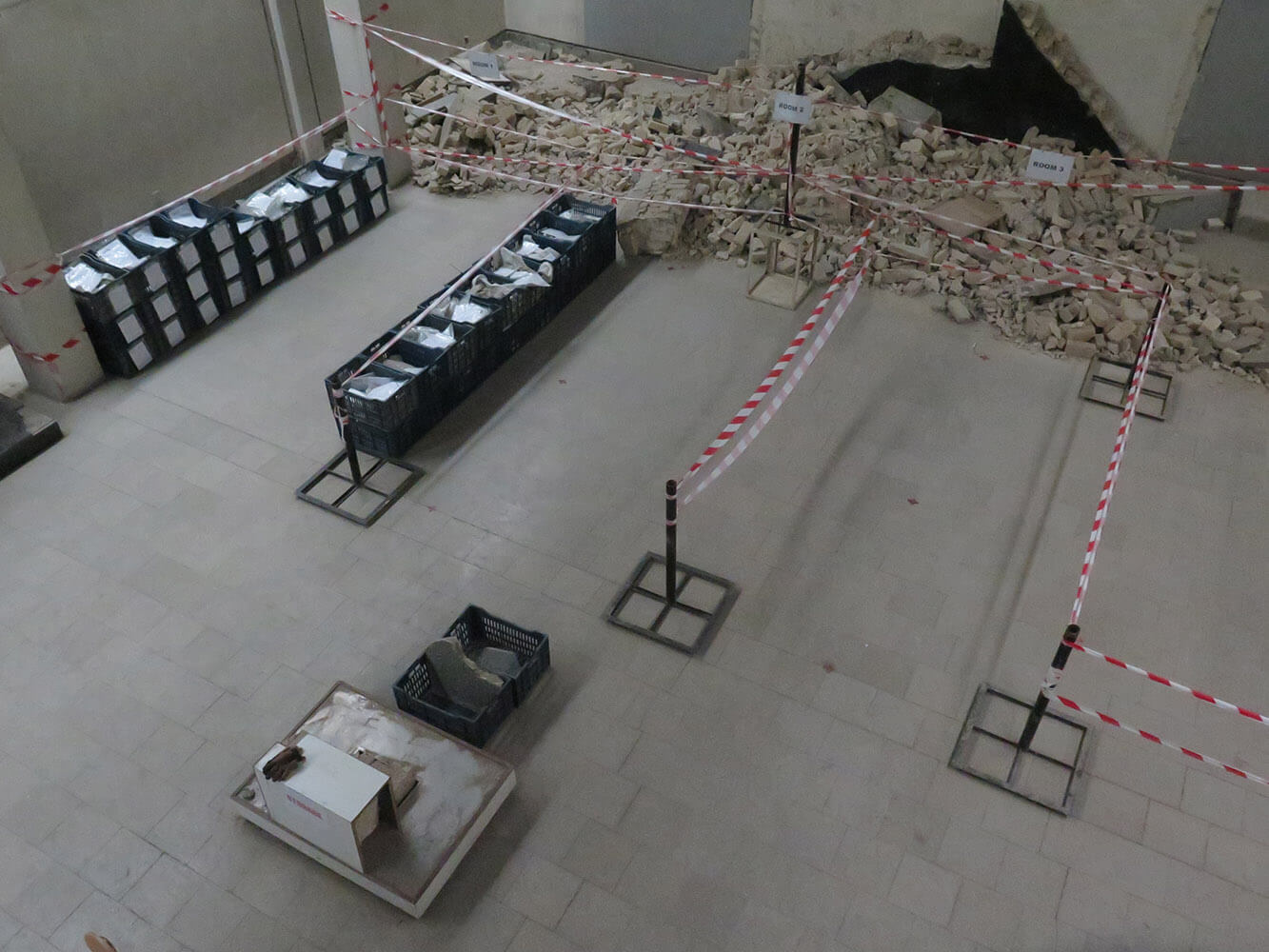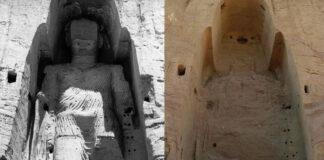When Laith Hussein talks about “a victory of the power of goods against the elements of darkness and backwardness”, the director of the Iraqi State Board of Antiquities and Heritage does not talk about something vague or abstract. He is talking about the Mosul Cultural Museum, which is currently being rebuilt after fundamentalist terrorists of the Islamic State (IS) destroyed Iraq’s second most important museum in 2015.
Terrorist Attacks on Cultural Heritage as a Social Media Campaign
On 26 February 2015, the terrorists posted pictures of their battle against culture and history on social media channels. They had just taken the city of Mosul and bombed the country’s most important museum after the National Museum in Baghdad, destroying its exhibits in a spectacular way. They burned 25,000 books and turned the ruins into a tax office (“Diwan Zakat”). In the storage, where the relics from the long history of Mesopotamia had been kept just a few days ago, the inhabitants now paid fees to the holy warriors. Countries around the globe were outraged but powerless.
By the way: many of the objects that were destroyed weren’t authentic pieces. However, the IS definitely didn’t use these objects en masse to finance their terror regime, as was (and still is!) repeatedly stated by the media. Many exhibits had already been moved to Baghdad for safety reasons in 1991 after the Gulf War and in 2003 after the Iraq War, as the former governor of Mosul, Atheel al-Nujaifi, pointed out.
The Museum – A War Zone
Only in July 2017, Iraqi troops were able to chase IS terrorists out of Mosul, then the damage to the museum was documented. When walking through this place, where important cultural objects from Nineveh and Nimrud had been on display before, sources from Babylonian, Parthian and Islamic cultures had been exhibited, one now had to be aware of mines. A bomb crater of several meters gaped in the floor of the large hall.
Many of the remaining objects were badly damaged, including a big lion from Nimrud, the so-called “Banquet Stela”, a monumental Assyrian guardian demon with a bull’s body, human head and wings (Lamassu) and a precious wooden cenotaph. Some pieces had been saved from destruction by museum employees who took them to Ninevah, as Richard Kurin of the Smithsonian Institution explained to Artnet News.
Bombs and Kidnappings: Museum Work Under Wartime Conditions
Richard Kunin was one of the first experts to inspect the museum after the liberation. He told Artnet News: “I remember my first time there. It was a total war zone It’s a dangerous place and the work is not usually what you expect as museum folks.” Kurin and his colleagues trained in Maryland for their mission: in a faux-Iraqi village they learned how to behave in case of ambushes and kidnappings. His French colleague Ariane Thomas, director of the Louvre’s Department of Near Eastern Antiquities, told that there was a bomb on the museum’s roof the first time she got there.
In light of such a massive destruction it was clear that Iraq wasn’t able to repair the damage on its own. In June 2018, the Iraqi Ministry of Culture, Tourism and Antiquities requested financial support from the ALIPH (International Alliance for the Protection of Heritage in Conflict Areas). The ALIPH soon granted $1.3 million and the restoration project found international help: heavyweights of the museum world such as the Smithsonian and the Louvre joined immediately, in 2020 the World’s Monuments Fund followed their example.
First Aid for Cultural Heritage
First, the objects had to be sorted, cleaned and placed into storage. Then the experts set up a restoration lab on site for “first aid” treatments. And then came Covid.
In July 2020 the Iraqi team obtained IT equipment enabling the Louvre experts to follow the work and train the staff from Paris. Ariane Thomas was pleasantly surprised: “We set up an online training programme for our Iraqi colleagues and we’re developing a pilot platform to exchange more efficiently on a daily basis. This period has given us time to better prepare the on-site missions we’re trying to organise at the moment, which are expensive and have to be as efficient as possible. I prefer to be optimistic, I tell myself we’ve learned to cooperate even better from a distance. We’re moving forward together, the project hasn’t come to a total standstill despite the global crisis, and that’s what matters most.”
Since the summer of 2020, the museum building has been further stabilized, debris was removed, sanitary facilities have been installed and a small exhibition outside gives an idea of what a museum that was brought back to life might one day look like. In February 2021, WMF experts visited the museum in Mosul and planned the next steps. The international support will hopefully help the museum to reopen in the next few years in order to display the country’s previous cultural heritage.
Richard Kurin sums up the project: “Restoring the Mosul Cultural Museum represents a victory of knowledge over ignorance, respect over intolerance, unity over division, humanity over brutality.”
The World’s Heritage Fund presents the Mosul Cultural Museum project on its website.
This is the website of the Smithsonian Institution.
The Rekrei project has been working on rebuilding the museum virtually.
Even before the museum was destroyed, we wrote about the danger cultural heritage faces due to the unrest in the Middle East.






